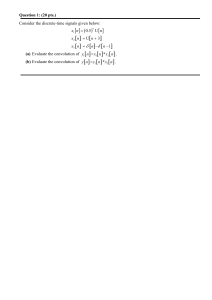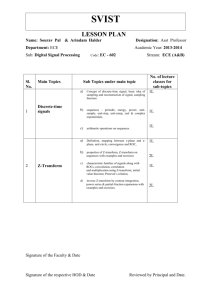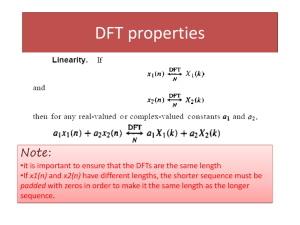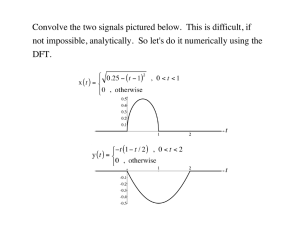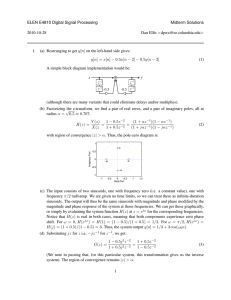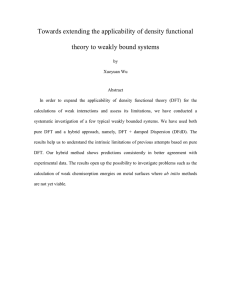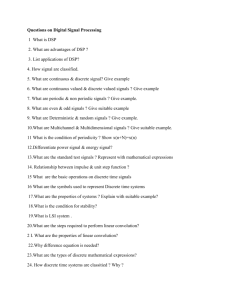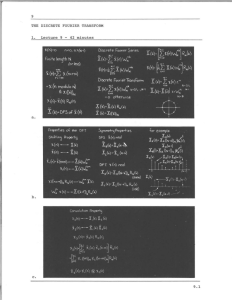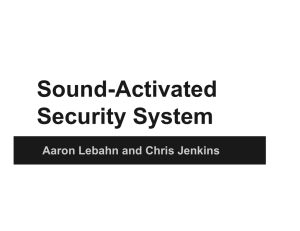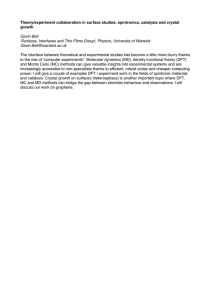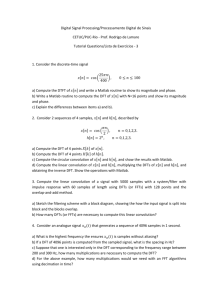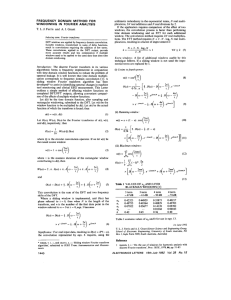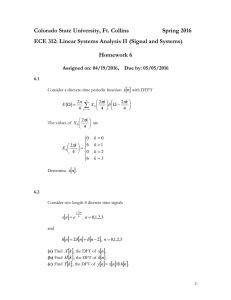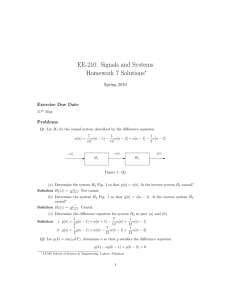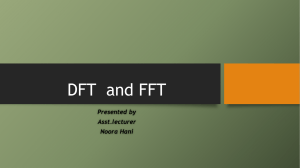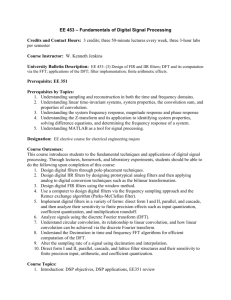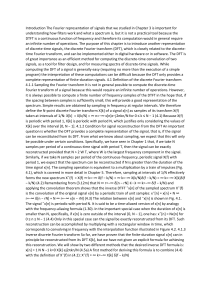ELEN E4810 Digital Signal Processing Midterm Test Thursday 2010-10-28 11:00-12:15 (75 min)
advertisement
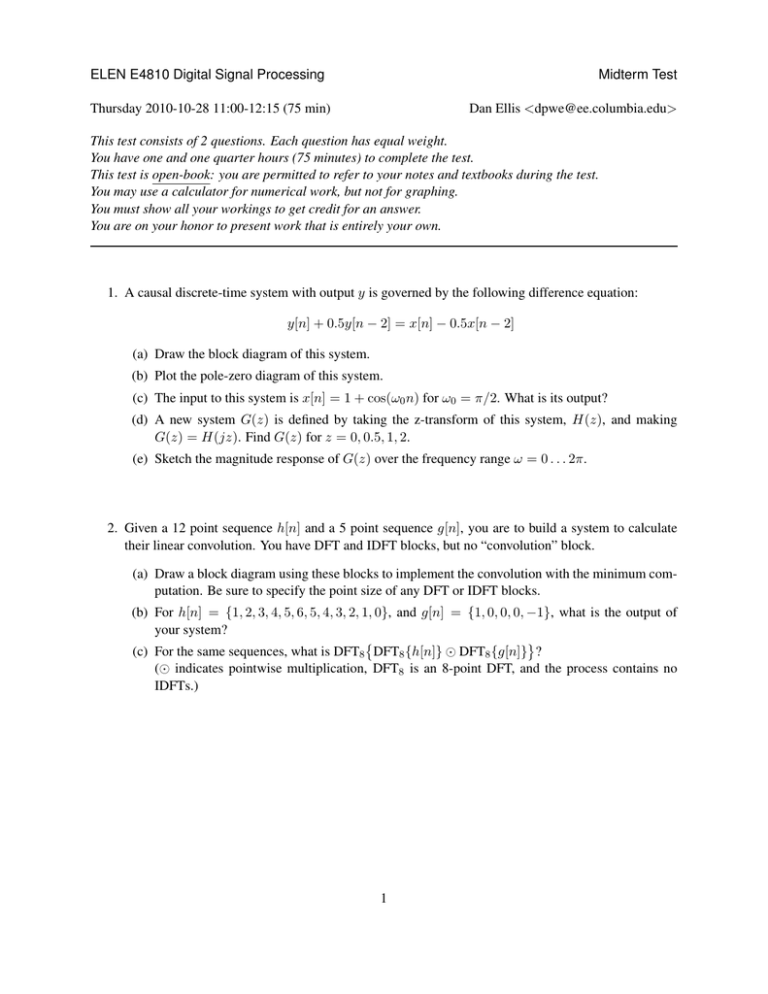
ELEN E4810 Digital Signal Processing
Midterm Test
Dan Ellis <dpwe@ee.columbia.edu>
Thursday 2010-10-28 11:00-12:15 (75 min)
This test consists of 2 questions. Each question has equal weight.
You have one and one quarter hours (75 minutes) to complete the test.
This test is open-book: you are permitted to refer to your notes and textbooks during the test.
You may use a calculator for numerical work, but not for graphing.
You must show all your workings to get credit for an answer.
You are on your honor to present work that is entirely your own.
1. A causal discrete-time system with output y is governed by the following difference equation:
y[n] + 0.5y[n − 2] = x[n] − 0.5x[n − 2]
(a) Draw the block diagram of this system.
(b) Plot the pole-zero diagram of this system.
(c) The input to this system is x[n] = 1 + cos(ω0 n) for ω0 = π/2. What is its output?
(d) A new system G(z) is defined by taking the z-transform of this system, H(z), and making
G(z) = H(jz). Find G(z) for z = 0, 0.5, 1, 2.
(e) Sketch the magnitude response of G(z) over the frequency range ω = 0 . . . 2π.
2. Given a 12 point sequence h[n] and a 5 point sequence g[n], you are to build a system to calculate
their linear convolution. You have DFT and IDFT blocks, but no “convolution” block.
(a) Draw a block diagram using these blocks to implement the convolution with the minimum computation. Be sure to specify the point size of any DFT or IDFT blocks.
(b) For h[n] = {1, 2, 3, 4, 5, 6, 5, 4, 3, 2, 1, 0}, and g[n] = {1, 0, 0, 0, −1}, what is the output of
your system?
(c) For the same sequences, what is DFT8 DFT8 {h[n]} DFT8 {g[n]} ?
( indicates pointwise multiplication, DFT8 is an 8-point DFT, and the process contains no
IDFTs.)
1
